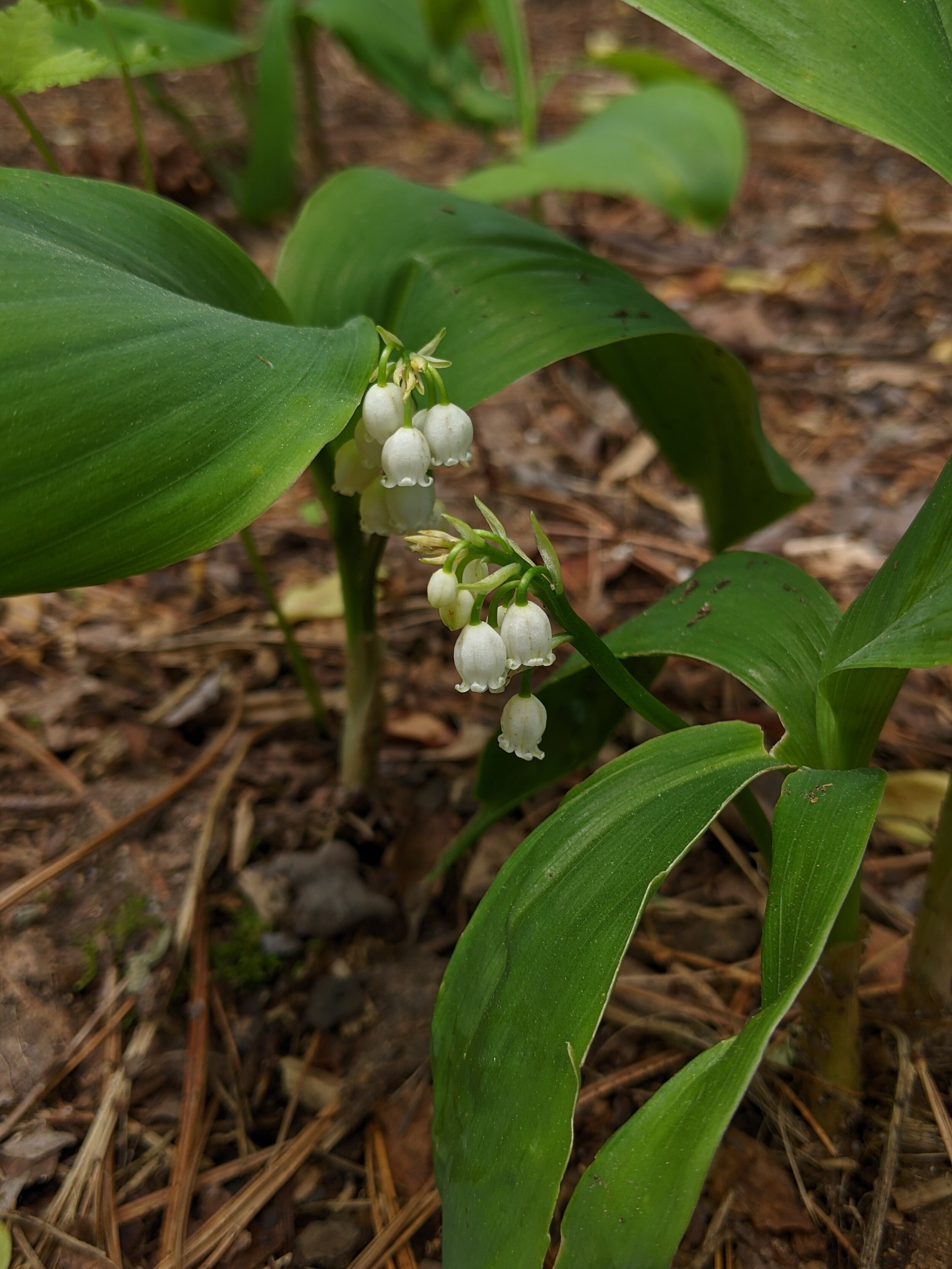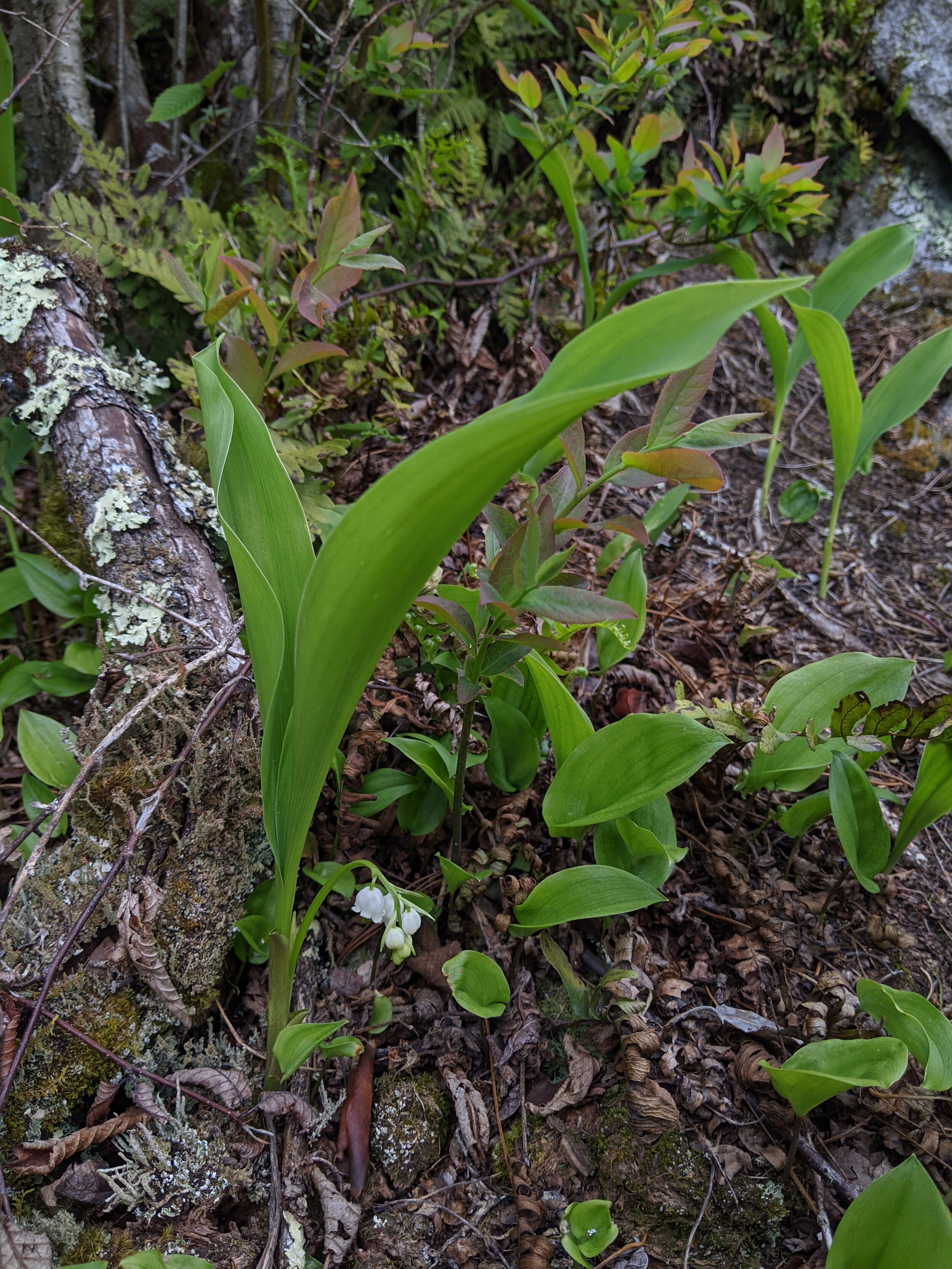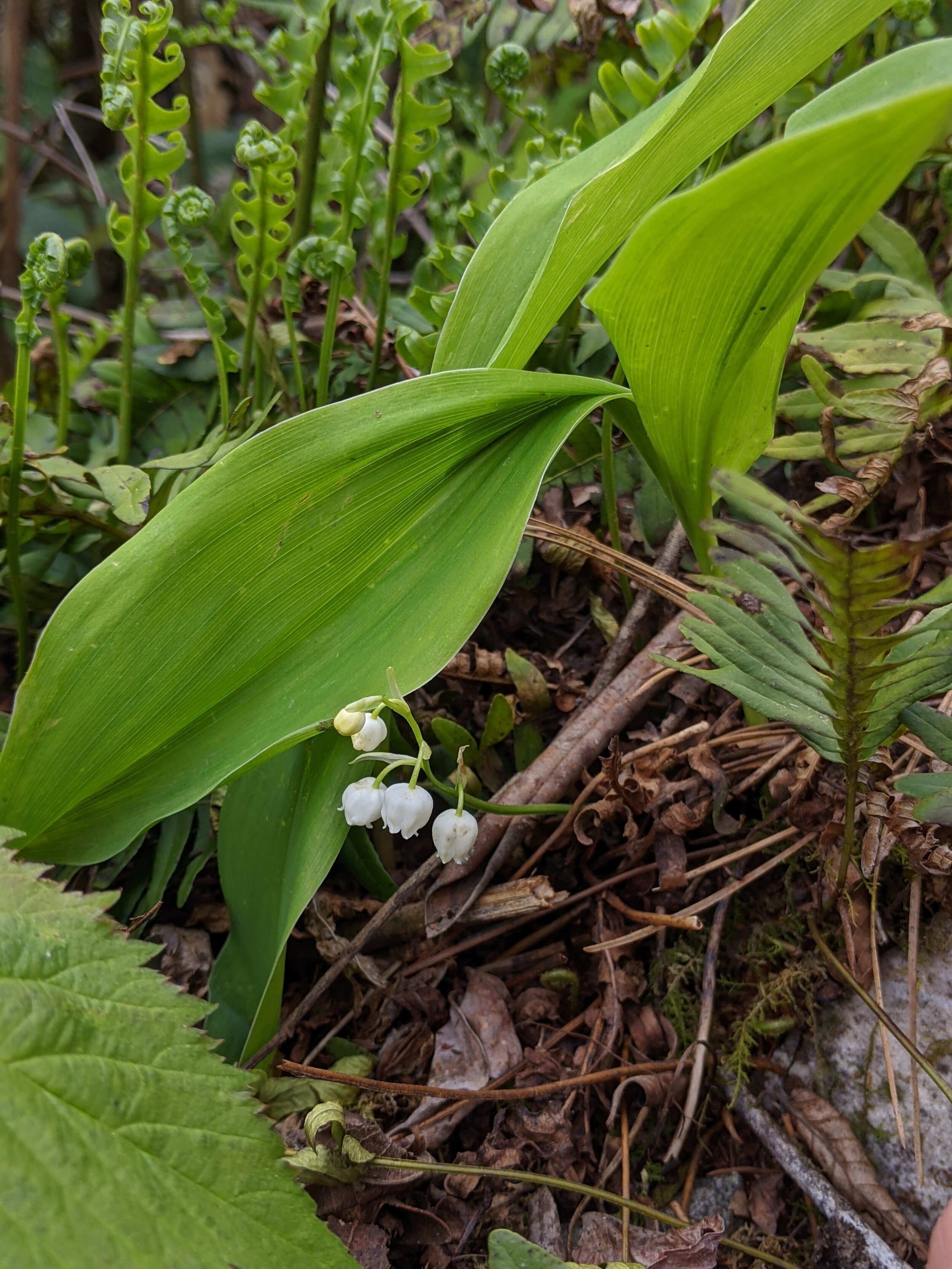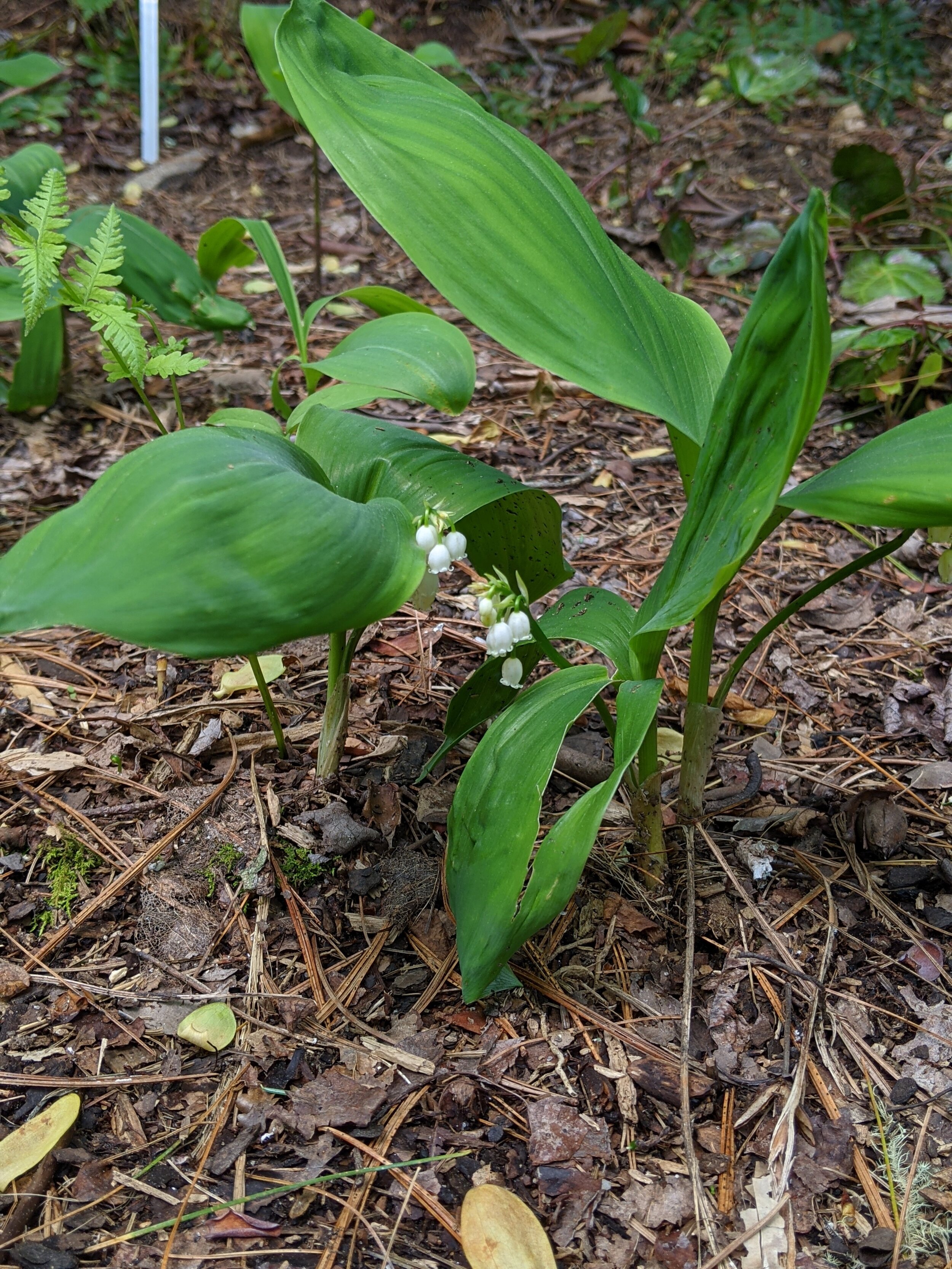The flora of the southern Appalachian Mountains will never cease to amaze me. Every time I visit this region of the world, I am blown away by the sheer number of plant species that grow on and around these ancient peaks. On a recent trip to western North Carolina, I stumbled across a small group of plants that somehow looked both familiar and strange at the same time. It turns out that I had crossed paths with a species that, up to that point, I thought was just a rumor.
Growing up, lily-of-the-valley was a very common sight. It seemed that everyone I knew was growing a dense patch of these wonderfully fragrant, spring bloomers. Indeed, lily-of-the-valley is an extremely popular garden plant that has found a place in many a cool, temperate garden around the world. It is known to science as Convallaria majalis and is native throughout Eurasia. Its popularity in the garden has seen that range expand in a big way. In fact, Eurasian lily-of-the-valley’s habit for aggressive clonal spread has made it into an invasive species in many locations.
Perhaps this is why I (as well as many others) never paid much attention to the genus. For some time, only C. majalis was considered to be valid. All other plants were written off as individuals or populations that had managed to escape from cultivation. Certainly, this isn’t too far off the mark in many cases as the remains of old homesteads are often outlived by robust populations of garden plants that once decorated their foundation. As such, plants like C. majalis are all too readily overlooked when encountered in places that don’t necessarily represent a present-day garden bed. Indeed, as recently as the 1980’s and 90’s, botanical authorities dismissed all populations of Convallaria outside of Eurasia as early garden escapees no matter how different they looked or how isolated they grew.
That is not to say that familiarity with a garden plant can’t lead to new insights. Indeed, the fact that I am so overly-familiar with gardens full of C. majalis was the main reason why my recent encounter in southern Appalachia conjured feelings of familiarity and novelty at the same time. I was hiking with friends near around 4,000 ft (~1,200 m) in elevation when we crested a small ridge. Tucked in among the rocks were a small group of monocots that, at first glance, looked like C. majalis. However, the more I looked at them, the more something felt off.
These plants were surprisingly tall and lanky. Their leaves were not nearly as broad either. Upon closer inspection, I realized a few were in bloom. Whereas the small white flowers on each inflorescence were carbon copies of those of the more familiar C. majalis, the entire inflorescence was very short. I am used to lily-of-the-valley flowers presented up above the leaves but those on the plants in front of me topped out well below leaf level. This odd combination of characters jogged a memory of a conversation I had in passing years ago. I forget who I was talking to and most of what was said, but something in the back of my mind remembered something about a native lily-of-the-valley. We took some pictures and kept hiking but I was excited to get back and see what my botanical key had to say.
Upon consulting Weakley’s Flora of the Southeastern United States, I found that what we had seen and photographed were not a rumor but an actual species! The plants keyed out to Convallaria pseudomajalis or American lily-of-the-valley. I was beside myself that I could have been so unaware of such a wonderful species. I got on the internet and tried to find out more, but that is where I hit some major road blocks. It turns out, there isn’t much readily available on this plant.
A large part of the issue stems from the fact that, as mentioned above, many had written this species off as nothing more than escaped representatives of C. majalis. Even among those who did pay enough attention to consider C. pseudomajalis a distinct species, there seems to be plenty of confusion over what to call it. Some sources list it as C. montana, however, this name is now considered illegitimate. Others call it C. majuscula whereas other sources list it under C. pseudomajalis. There is no denying that such taxonomic confusion makes tracking down resources on this plant a difficult task. Add that to the fact that outside of taxonomy and field botany, seemingly no one has done any ecological work on the plant and you find yourself in the same seat as me - excited but confused.
What little information I could track down does make me feel very confident that C. pseudomajalis is indeed a true species and not an escaped version of C. majalis. For starters, with even the slightest bit of scrutiny, there is no denying these plants are morphologically distinct. Also, the habitats in which C. pseudomajalis is found are quite isolated, even for a garden escape. For starters, C. pseudomajalis can only be found in the southern Appalachian Mountains growing at elevations between ~3,200 and ~4,900 feet (1,000 - 1,500 m) along rocky ridges. These sorts of places don’t jump out as sites of old homesteads. Also, C. pseudomajalis populations hardly ever reach the density one sees with C. majalis in most instances. Coupled with the isolated nature of C. pseudomajalis populations, it would take a lot more convincing for me to fall into the “escaped from cultivation” camp.
Taken together, I feel pretty confident in saying I finally got to meet North America’s native lily-of-the-valley. It was a very exciting find that occurred in a very beautiful part of the world and I am happy to know this plant exists. Perhaps one day, some intrepid scientist will turn their focus onto C. pseudomajalis and be able to provide us with deeper insights into its biology, ecology, and status in this ever-changing world.



